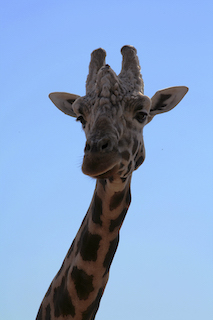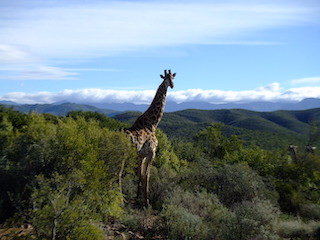Significance Of Giraffes In African Culture
Giraffes, with their towering necks, graceful movements, and distinctive spotted coats, are one of Africa’s most iconic animals. Native to the African continent, giraffes roam the savannahs and open woodlands. They often leave a lasting impression on all who encounter them. But beyond their physical beauty, giraffes hold deep symbolic significance in various African cultures. Throughout history, people have revered them. People also feature them prominently in folklore, traditional art and rituals. In this article, we explore the cultural, spiritual, and symbolic importance of giraffes in African societies. We shed light on their role in indigenous beliefs, African mythology, and the broader African worldview.
Giraffe in African symbolism
In many African cultures, animals are not mere physical creatures but are carriers of deeper spiritual meanings and symbols. Giraffes, due to their unique physical characteristics, represent a variety of ideas, from strength and wisdom to grace and spirituality.
1) Wisdom and perspective
The giraffe’s most distinctive feature is its long neck. It allows the giraffe to see far beyond the reach of most other animals. In African symbolism, this characteristic has deep roots with heightened wisdom and the ability to gain a broad perspective. The giraffe is an animal that has a view of the world that few others can attain. As such, it symbolizes insight, vision, and the ability to look beyond immediate circumstances.
In some African cultures, the giraffe is a symbol of a sage or wise elder. It is someone who can provide guidance based on a comprehensive understanding of life and the world. This symbolism is not only about intellectual wisdom but also spiritual awareness. Giraffes are often mediators between the earthly and the spiritual realms. They offer those who interact with them a sense of clarity and vision.
2) Grace and beauty
Another prominent characteristic of giraffes is their grace. Despite their towering height, giraffes move with a fluid and gentle elegance. This graceful nature makes them a symbol of beauty and balance in several African cultures. The way they move through the landscape without rushing or appearing hurried is elegant in nature. It suggests the importance of patience, harmony, and living in alignment with nature’s rhythm.
In the art and storytelling traditions of various African tribes, giraffes are symbols of peacefulness, serenity, and beauty. You can see this in traditional African beadwork, paintings, and sculptures. Here giraffes are often in stylised forms, emphasising their beauty and grace.
3) Longevity and resilience
Giraffes live for up to 25 years in the wild. Their resilience to the harsh African environment is symbolic of endurance and survival. The giraffe’s can thrive in dry, open plains, often in the presence of predators. This has made it a symbol of strength and perseverance. In many African cultures, the giraffe embodies the qualities of resilience in the face of adversity. Its survival against the odds highlights its enduring power of life itself.
Giraffes face many challenges, be it in the form of environmental hardships or interpersonal struggles. This represents the idea that with grace, patience, and strength, one can persevere and emerge stronger from difficult situations. This symbolism is often in the form of stories and folklore. The giraffe’s endurance is a guiding force for those who are struggling.
4) Connection to nature and the divine
The giraffe’s high vantage point allows it to see over the landscape. This links it to the idea of the sacred connection between humans, nature, and the divine. In many African spiritual traditions, animals are embodiments of divine forces or spirits. Their behaviours are messages from the gods. The giraffe’s elevated position in the natural world makes it a powerful symbol of spiritual enlightenment. It is also a symbol of connection to higher realms.
In some communities, the giraffe is a messenger from the gods, carrying divine wisdom or guidance to the people. It bridges the gap between the human world and the divine. This offers insight and clarity in times of uncertainty or confusion. People further express this divine connection through the giraffe’s role in African spiritual ceremonies and rituals. They invoke it as a spirit animal or guide.
Giraffes in African mythology
African mythology is rich with stories, legends, and fables that feature animals as central characters. Giraffes, though not as commonly mentioned as more traditional animals like lions or elephants, still appear in several African mythological traditions. In these stories, giraffes are often beings with special powers or abilities, reflecting their symbolic roles in African culture.
1) Giraffe and the creation of the world
In some African creation myths, the giraffe plays a significant role in the shaping of the world and the balance of nature. One such myth, found among the Maasai people of East Africa, speaks of a time when the giraffe was the only animal capable of reaching the sun. In this myth, the giraffe’s long neck allowed it to obtain the sun’s warmth and light, thus spreading it throughout the world and bringing life to the land.
This creation myth highlights the giraffe’s role as a bearer of life and light, bringing vitality to the Earth and connecting the physical and spiritual realms. In this context, the giraffe represents not only a link to the divine but also the nurturing and life-giving aspects of nature itself.
2) Giraffe in trickster tales
The trickster archetype is a common figure in African folklore, and while the giraffe is not always a trickster, it does appear in some tales where it embodies qualities of mischief or cleverness. In some stories, the giraffe is outwitting other animals through its ability to see far and wide, using its heightened perspective to foresee dangers or opportunities that others cannot.
These tales often emphasize the giraffe’s cunning and its ability to navigate the world in ways that others cannot, symbolizing wisdom and resourcefulness. In these contexts, the giraffe is an intelligent, strategic figure who uses its abilities to navigate challenges.
3) Giraffe in African ancestral worship
In some African traditions, animals are ancestors or spirits that have passed into the spiritual realm. The giraffe, due to its graceful nature and spiritual significance, is sometimes an embodiment of ancestral spirits, particularly those who are wise or who have a deep connection to the natural world. In these cultures, people respect and protect giraffes because they carry the wisdom and knowledge of past generations.
For example, in some regions of southern Africa, giraffes have deep connections to ancestral spirits and are symbols of continuity between the living and the deceased. They are thought to carry the messages of ancestors, offering guidance and protection to those who honor them. Rituals involving giraffes may be performed to honor these spirits, ask for guidance, or seek protection for the community.
Giraffe in African art and rituals
Art and rituals play a significant role in the expression of cultural beliefs, and giraffes are often depicted in African art as symbols of strength, grace, and spiritual power. The giraffe’s unique appearance and behavior make it a popular subject in African sculpture, beadwork, and painting. These artistic representations not only reflect the aesthetic qualities of the giraffe but also embody the symbolic meanings attached to the animal in various African cultures.
1) Giraffes in traditional African art
Giraffes are commonly featured in African art, particularly in the art of the Maasai and other East African tribes. These artistic representations often emphasize the giraffe’s long neck and graceful form, using stylized patterns to symbolize the animal’s spiritual significance. Beaded necklaces, carvings, and textiles often incorporate giraffe motifs, celebrating the animal’s beauty, grace, and strength.
In addition to physical representations, giraffes are sometimes used in storytelling through visual art. Paintings and murals may depict giraffes as part of larger narratives, where they symbolize particular cultural themes, such as wisdom, resilience, or divine connection. These art forms serve as a way to pass down cultural knowledge, educating younger generations about the importance of giraffes and the values they represent.
2) Rituals and ceremonies involving giraffes
While giraffes may not always play a central role in African religious rituals, their symbolic significance makes them important in various ceremonial contexts. In some tribes, the giraffe is invoked during rites of passage or coming-of-age ceremonies, where it serves as a symbol of the wisdom and strength that the individual will need as they transition into adulthood. The giraffe’s height and grace are seen as qualities that young people should strive to embody as they grow and mature.
Additionally, giraffes are sometimes involved in harvest rituals or celebrations of abundance, as their role in African folklore often ties them to the life-giving forces of the sun and the earth. These rituals may involve songs, dances, or offerings made to honour the giraffe’s role in sustaining life and maintaining balance in nature.
3) Conservation and giraffe’s role in modern African culture
In modern Africa, the giraffe’s cultural significance extends beyond symbolism and mythology to include conservation efforts. As giraffe populations face threats from habitat loss and poaching, many African communities have taken steps to protect these majestic animals. In these efforts, the giraffe is a symbol of African heritage and natural beauty, with conservation initiatives recognising the importance of preserving not just the giraffes themselves but also the cultural traditions that has deep roots with their existence.
The giraffe’s significance in African culture today has deep connections to the preservation of wildlife, ensuring that future generations will continue to experience the spiritual and symbolic connections that have existed for centuries. In some cases, giraffe conservation efforts are accompanied by community outreach programs that educate locals about the giraffe’s role in African traditions and its importance in maintaining ecological balance.
Wrapping up
The giraffe holds a prominent place in African culture, symbolizing a wide range of qualities, including wisdom, grace, endurance, and a deep connection to nature and the divine. From ancient myths to contemporary art, giraffes have played a significant role. They have shaped the spiritual and cultural landscape of the African continent. Through their powerful symbolism, giraffes serve as a reminder of the intricate relationship between humans, animals, and the natural world. As cultural and spiritual symbols, giraffes continue to inspire and influence African societies. They represent both the beauty of the land and the timeless values that shape African identity.





